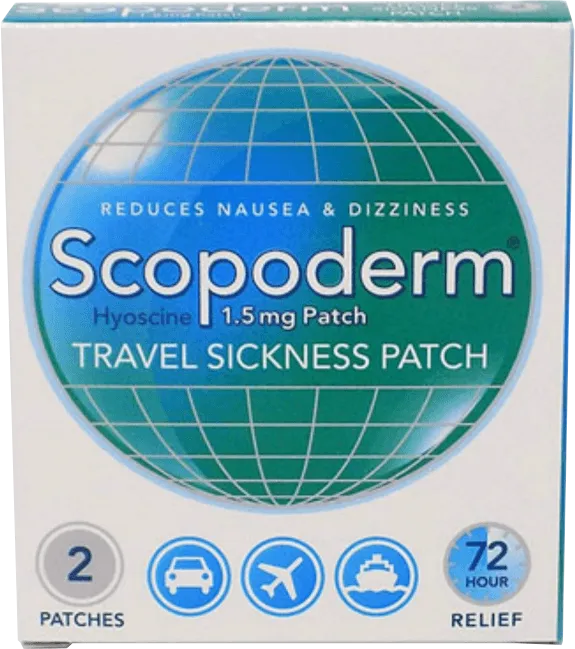
Images are for illustration purposes only.
Scopoderm Patches
Available size:
Price £17.99
Expected Delivery: Friday
Why choose Click Pharmacy?
- Rated 'Excellent' on Trustpilot
- UK Registered Pharmacy
- Price Match Guarantee
GPhC Internet Pharmacy Registration
UK Pharmacy Registration Number 9011460
Scopoderm patches are specially formulated for the prevention of motion sickness while traveling by car, plane, train, etc. It contains scopolamine, which is an anti-emetic or anti-nauseant. It works to relieve the symptoms of motion sickness such as nausea, vomiting, loss of balance, dizziness, headache, sweating and burping.
Scopoderm patches are very easy to use. They are applied behind the ear 5-6 hours before traveling. These patches offer up to 72 hours of relief from motion sickness.
Patient Information Leaflet
Follow the following steps to use Scopoderm patches:
-
Tear open the sachet and take out the patch. Peel off the clear plastic backing.
-
Carefully hold the patch by its edge and avoid touching its sticky side.
-
Now, find a hairless and dry area of skin behind your ear. Carefully press the sticky side of the patch there. Hold it there and count slowly to ten.
-
Hold until the patch is nice and firm in its place.
-
Wash your hands properly.
-
Make sure to wash your hands as well as the area of skin behind the ear after you remove the patch.
-
If the patch comes off on its own while traveling, discard the patch. Properly wash the area and put a new patch behind the other ear.
-
A patch can last up to 72 hours which makes it convenient for longer journeys.
-
Make sure to wash your hands before and after applying or removing a patch.
-
Do not take any other medicines for motion sickness if you are already using Scopoderm patches.
-
Do not drink alcohol while using this medicine.
-
Follow the proper way of applying the patch. Do not cut the patch to lower the dose. It may lead to severe side effects.
-
Keep out of reach of children.
-
Avoid contact with the eyes.
Scopoderm patches contain the following ingredients:
Active ingredients:
Each patch contains 1.5 mg scopolamine. The average amount of scopolamine absorbed from each patch in 72 hours is 1mg.
Inactive ingredients:
-
Light mineral oil or paraffin light liquid
-
Polyisobutylene
Scopoderm Patches Reviews
Expected Delivery: Friday